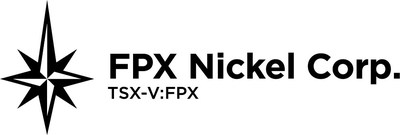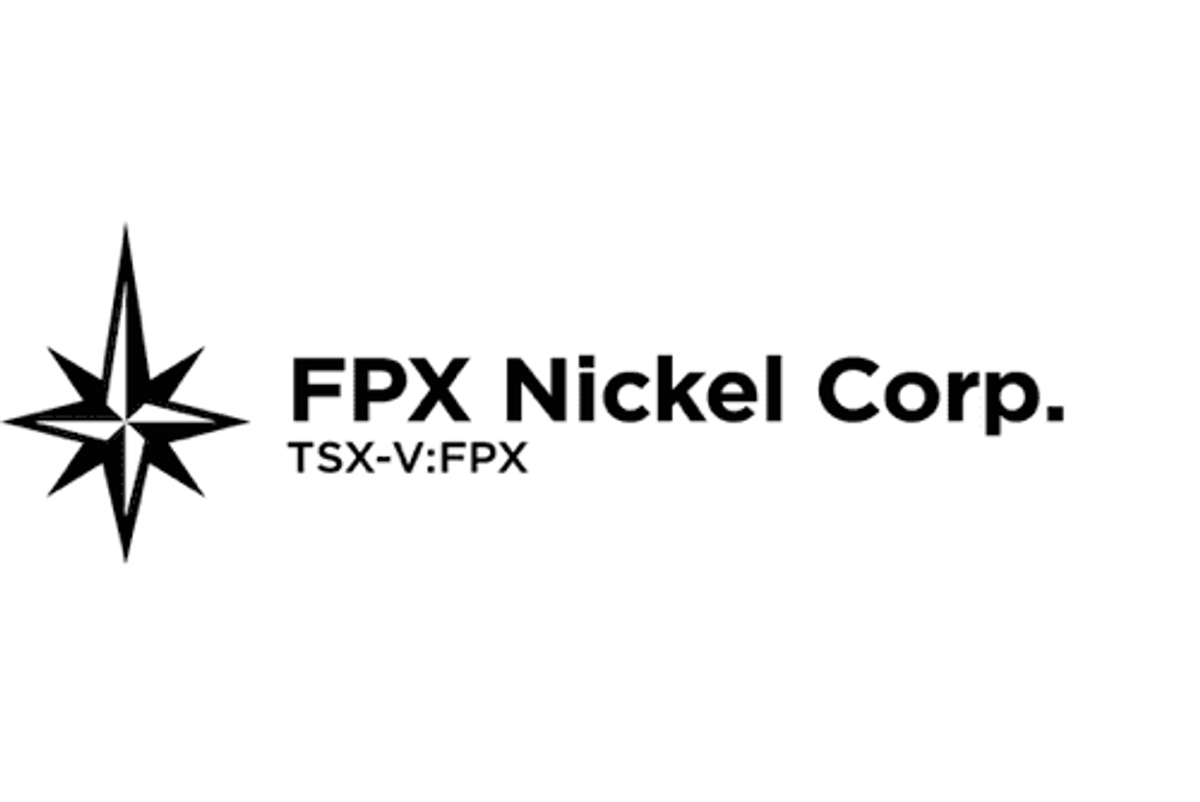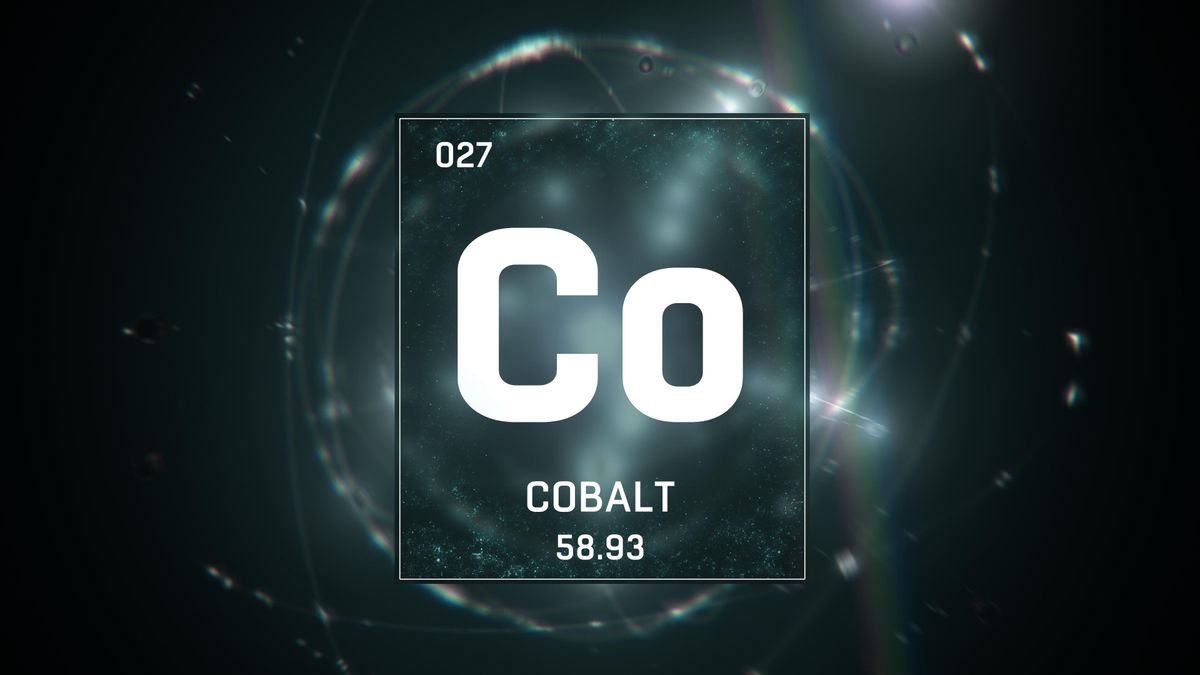FPX Nickel Corp. (TSXV: FPX) (" FPX " or the " Company ") is pleased to report the results of expanded field tests which demonstrate the potential for significant direct air carbon capture in tailings at its Baptiste Project in the Decar Nickel District in central British Columbia. These field tests, from Phase 2 of a two-part program conducted by researchers from the University of British Columbia ( "UBC" ) funded by FPX and the Government of Canada continue to demonstrate that the Baptiste Project's tailings can sequester significant quantities of carbon dioxide ( "CO 2 " ) when exposed to air through a natural process of mineral carbonation.
Highlights
- The positive results of the 59-day Phase 2 field test (September to November 2020 ) described herein expand upon the 24-day Phase 1 results ( August 2020 ) described in the Company's February 16, 2021 news release
- Significant rates of carbon sequestration were noted on a continuous basis throughout Phases 1 and 2 under all test conditions, with the highest rates of sequestration occurring in tailings subjected to churning at regular intervals to encourage greater exposure of the crushed material to air
- Measurements during the combined 83-day Phase 1 and 2 field programs indicate capture of a total of 5.8 grams of CO 2 for each kilogram of crushed Baptiste tailings exposed to air by churning on a regular basis to a depth of 12 cm
- Carbon sequestration rates observed during these Phases 1 and 2 (3.7 kg CO 2 /m 2 year) are approximately 50% greater than the estimated average rates of capture under the dry conditions at BHP's Mount Keith nickel mine in Western Australia (2.5 kg CO 2 /m 2 year; see Note 1)
Cautionary Statement: The test results described herein are preliminary in nature and may not be representative of conditions or results in an operating environment, particularly as it pertains to the representativeness of mineralization, moisture content, changes in weather conditions, process water chemistry and tailings emplacement configuration, including the rate at which tailings are covered with fresh material, among other para meters. There is no certainty that the results reported herein will be realized in an operating environment. Further studies are recommended to expand the scale of testing to better understand the potential for carbon sequestration to be realized in an operating environment.
"These positive results continue to demonstrate that Baptiste has unique potential to become the world's first large-scale, carbon-neutral nickel operation," commented Martin Turenne , FPX Nickel's President and CEO. "The competitive advantage for FPX is the elevated content in our Baptiste deposit of the key, highly carbon-reactive mineral brucite, which is present in higher concentrations at Baptiste than at typical intrusive-hosted ultramafic nickel sulphide deposits. The elevated brucite content of the Baptiste deposit therefore presents us with a unique opportunity to drive toward carbon neutrality at Baptiste, and we look forward to expanded testing in 2021 to deliver further evidence to investors and potential strategic partners alike."
The two-phase test program builds on more than a decade of research on technologies that maximize the reaction between CO 2 and brucite (mineral form of magnesium hydroxide) present in the Baptiste mine tailings. In a natural process called carbon mineralization, CO 2 reacts with brucite in the tailings, binding the CO 2 in a benign, solid magnesium carbonate which is stable on a geological time scale.
The test work summarized herein was completed on a representative Baptiste mineralized composite of approximately 300 kilograms comprised of core sample reject material crushed to 50-360 µm, consistent with the tailings size anticipated during mine operation. Analysis of the core material indicated 1-2 wt% content of brucite, a range consistent with the average brucite content of the Baptiste deposit. The Phase 1 field program was conducted at an outdoor site in Prince George from August 5-29, 2020 . On completion of Phase 1 testing in August, the tailings were moved to Vancouver and a second stage was conducted outdoors from September 14 to November 12, 2020 .
The tailings sample was divided into splits of 37 kilograms loaded to a depth of 12 centimeters into eight cells in two large containers, with local water added to achieve a moisture content of approximately 15 wt%. One container was exposed to local weather conditions (including precipitation and solar radiation), while the second was placed under a shade tent to control the water content of the tailings, which was maintained approximately constant by the manual addition of water from time to time. Large rainfall events had no noticeable impact on the rate of CO 2 capture, which is considered a positive finding given the precipitation rates in central British Columbia .
Two physical manipulations, churning and aeration, were each applied to four of the eight cells, with the four remaining cells left undisturbed as controls. In the churned cells, the tailings were manually overturned to a depth of 12 cm; churning occurred once per day during the Phase 1 test, and on an approximately weekly basis during Phase 2. In the aerated cells, narrow holes with a diameter of 1 cm were bored on a 5 cm grid from the surface to the bottom of the cell to encourage a greater exposure of air to the crushed material. Two methodologies were employed to confirm the amount of carbon sequestered during the test program, as described in the Company's February 16, 2021 news release.
In the cells churned to a depth of 12 cm at regular intervals, carbon absorption measurements demonstrate capture of 5.8 grams of CO 2 for each kilogram of crushed Baptiste tailings in the cell over the course of the combined 83-day Phase 1 and 2 programs, with no addition of new tailings. Based on this amount of carbon sequestration, it is estimated that only approximately 45% of the brucite reacted with carbon dioxide, leaving 55% of the brucite available for reaction and suggesting future opportunities to optimize the reaction between tailings and CO 2 in air to achieve even higher rates of carbon capture.
In the control and aerated cells, an average of 2.5 grams of CO 2 was captured for each kilogram of crushed Baptiste tailings in the cells over the course of combined Phase 1 and 2 trials, representing approximately 43% of the sequestration rate observed in the churned cells.
Carbon sequestration rates observed in the churned cells during Phases 1 and 2 (3.7 kg CO 2 /m 2 year) are approximately 50% greater than the estimated average rates of capture at BHP's Mount Keith nickel mine in Western Australia (2.5 kg CO 2 /m 2 year), where it is estimated that approximately 39,800 tonnes/year of atmospheric CO 2 are being trapped and stored in tailings (see Note 1).
Note 1: International Journal of Greenhouse Gas Control , "Offsetting of CO 2 Emissions by Air Capture in Mine Tailings at the Mount Keith Nickel Mine, Western Australia : Rates, Controls and Prospects for Carbon Neutral Mining", Wilson et al., 2014
Next Steps
In addition to the 2020 direct air capture test results described herein, UBC researchers have conducted additional testing to assess the rate and quantity of carbon capture from the injection of concentrated CO 2 gas into Baptiste tailings. The Company expects to report the findings of the concentrated injection test program in the coming weeks.
The Company is further expanding the size and scope of carbon sequestration testing, with two direct air capture experiments to commence in the third quarter of 2021:
- Six-month experiment at a location in Vancouver on approximately 2.4 tonnes of tailings material, or approximately eight times the scale of the 2020 experiment
- 1-year experiment at a location in central British Columbia on approximately 300 kg of tailings material, designed to better understanding the longer-term carbon sequestration potential of undisturbed tailings.
These two experiments will build off the 2020 experiment and address several conceptual operating parameters, including:
- Expanding the tonnage footprint to understand sequestration performance at varying depths of tailings deposition;
- Building an enhanced understanding of the impact of tailings water content and air temperature (including freezing temperature) on the rate of carbon sequestration;
- Improving the understanding of the effect of churning frequency on the rate of carbon capture.
Dr. Peter Bradshaw , P. Eng., FPX's Qualified Person under NI 43-101, has reviewed and approved the technical content of this news release.
About the Decar Nickel District
The Company's Decar Nickel District claims cover 245 km 2 of the Mount Sidney Williams ultramafic/ophiolite complex, 90 km northwest of Fort St. James in central British Columbia . The District is a two-hour drive from Fort St. James on a high-speed logging road.
Decar hosts a greenfield discovery of nickel mineralization in the form of a naturally occurring nickel-iron alloy called awaruite (Ni 3 Fe), which is amenable to bulk-tonnage, open-pit mining. Awaruite mineralization has been identified in four target areas within this ophiolite complex, being the Baptiste Deposit, and the B, Sid and Van targets, as confirmed by drilling in the first three plus petrographic examination, electron probe analyses and outcrop sampling on all four. Since 2010, approximately US $24 million has been spent on the exploration and development of Decar.
Of the four targets in the Decar Nickel District, the Baptiste Deposit, which was initially the most accessible and had the biggest known surface footprint, has been the focus of diamond drilling since 2010, with a total of 82 holes and over 31,000 metres of drilling completed. The Sid target was tested with two holes in 2010 and the B target had a single hole drilled in 2011; all three holes intersected nickel-iron alloy mineralization over wide intervals with DTR nickel grades comparable to the Baptiste Deposit. The Van target was not drill-tested at that time as rock exposure was very poor prior to more recent logging activity.
As reported in the current NI 43-101 resource estimate, having an effective date of September 9, 2020 , the Baptiste Deposit contains 1.996 billion tonnes of indicated resources at an average grade of 0.122% DTR nickel, containing 2.4 million tonnes of nickel, plus 593 million tonnes of inferred resources with an average grade of 0.114% DTR nickel, containing 0.7 million tonnes of nickel, both reported at a cut-off grade of 0.06% DTR nickel. Mineral resources are not mineral reserves and do not have demonstrated economic viability.
About FPX Nickel Corp.
FPX Nickel Corp. is focused on the exploration and development of the Decar Nickel District, located in central British Columbia , and other occurrences of the same unique style of naturally occurring nickel-iron alloy mineralization known as awaruite. For more information, please view the Company's website at www.fpxnickel.com or contact Martin Turenne , President and CEO, at (604) 681-8600 or ceo@fpxnickel.com .
On behalf of FPX Nickel Corp.
"Martin Turenne"
Martin Turenne , President, CEO and Director
Forward-Looking Statements
Certain of the statements made and information contained herein is considered "forward-looking information" within the meaning of applicable Canadian securities laws. These statements address future events and conditions and so involve inherent risks and uncertainties, as disclosed in the Company's periodic filings with Canadian securities regulators. Actual results could differ from those currently projected. The Company does not assume the obligation to update any forward-looking statement.
Neither the TSX Venture Exchange nor its Regulation Services Provider accepts responsibility for the adequacy or accuracy of this release.
SOURCE FPX Nickel Corp.

![]() View original content to download multimedia: https://www.newswire.ca/en/releases/archive/June2021/09/c6268.html
View original content to download multimedia: https://www.newswire.ca/en/releases/archive/June2021/09/c6268.html







